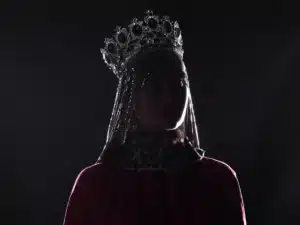Across Eastern Europe, kička isn’t just a classic accessory: it’s a cultural signifier deep in the traditions of the area. This is no ordinary headpiece, home to complex designs and vibrant colours that holds great importance in a whole host of celebrations and rites of passage, in countries such as Slovakia, Poland and Ukraine. Kička has always more than just beauty, each piece was a sign of cultural pride, family heritage and identity.
It is a part of the most significant everyday life occasions in Eastern Europe: weddings and a festival, where kička stands for richness and unity. Today, the whole building stands as a blend of ancient crafts and modern fashion, creating an attraction to people who want tradition and beauty. In this article, we will learn about where kička came from and why it’s important in ceremonies, as well as how kička remains a beloved symbol of cultural heritage in the modern world.
In this case, though, let’s delve a little closer into the story of kička and see why this is such a timeless symbol of Eastern European identity.
What is Kička? Origins and Early Significance
Kička is a traditional cropped headdress in Eastern European culture and it has long held beauty, status and heritage meaning. This unique accessory, made in a detailed fashion with bright colors, which date centuries back proved going niche in countries such as Slovakia and Poland. It was used originally in important ceremonies like weddings to represent something new and prosperous ones, and unity.
It was historically fashioned from materials taken from local sources, reflecting local craftsmanship by each region. There were some Kička, although they were elaborate with beads, embroidery, and flowers, while some were simple and bold in a way that highlighted a person’s modesty and proximity to nature. it gradually became a cultural signifier, used to identify both family and community traditions, sometimes even representing pride, which often made communicating who you are and where you come from a part of your identity.
Today, it is an icon of tradition still loved and cherished by people of all races who admire the beauty of history but also by the modern generation who appreciate how important kička is symbolically and to the history of art.
The Role of Kička in Eastern European Weddings and Ceremonies
For many years, it has been a rare symbol of love and union, as well as our Eastern European culture, of which it is a vital part. In Slovakia and Poland, brides often marry wearing a kička for a beautiful transition into a new married life. This headpiece has a lot of beautiful, colorful, intricate designs that are supposed to bring good fortune, happiness, and prosperity to the new couple.
At these ceremonies, it becomes something more than just an accessory: it symbolizes blessings of the family and the continuity of heritage. Some customs around it might involve special songs, dances, and rituals, each with its own symbolism for the couple’s future. For example, in certain traditions, the moving or positioning it on the bride’s head indicates the bride’s official arrival into her new family, her household.
It is a deeply cultural tradition, still practiced by some communities; these wedding traditions serve to underscore that. Today, the kička is an important, cherished tradition, along with being a symbol of enduring cultural pride and familial attachment from one generation to the next.
Regional Variations: How Kička Styles Differ Across Eastern Europe
Kička in Eastern European countries, whose style varies greatly, is dependent on the country’s materials, colors, and cultural customs. For example, it designs in Slovakia tend to be large and ornate, having lots of bright colors, lots of heavy embroidery, and intricate beadwork to represent the area’s legacy and impression of the country and its nature. We also use these elaborate kička headpieces for wedding ceremonies and other traditional ones to signify joy and prosperity.
Hungarian kička styles, then, are more modest, with their color and patterns less intense. It may be less decorative than their Slovak kuckies, but their meaning is just as deep—purity and modesty, for instance. Kička also referred to sometimes as vyshyvanka in Ukraine if it has traditional embroidered patterns. These designs represent unity and continuity with cultural roots and motifs that include floral and geometric patterns.
The diversity of kička styles within these regions shows us the diversity within communities that create these styles as a way to personalize the tradition and have it become their own, introducing local values and artistic expression. Yet, despite this, each style is a beautiful reminder of Eastern Europe’s shared heritage and of the special beauty of its cultural diversity.
The Symbolism of Kička: Meanings Beyond the Aesthetic
The beauty of it also lies beyond; kička speaks to the symbolic meanings of color and the heart deep in ties to the wearers’ heritage and culture. It integrates every color, pattern, and material utilized, and it has a purpose — frequently representing arrangements of prosperity, protection, or family joins. It is also considered a protective symbol in many Eastern European cultures, and there’s a belief that certain designs will help ward off negative energy and then bring luck to the wearer.
Kička also uses colors in their own unique meaning. Red and gold bright colors symbolize happiness, strength, and prosperity; softer colors might be representing purity, peace. Kička also has layers of meaning that are added by floral patterns or geometric shaped woven into the form, themes such as growth, unity and life’s cycle.
These symbols allow it to exceed being a decoration, with kička becoming representative of the values and beliefs of Eastern European communities.
Kička in Modern Times: Fashion, Festivals, and Cultural Revival
Today, it has returned; it’s been given new life in contemporary fashion and popular culture. Designer and artists are reinterpreting this classic headpiece, once a rare adornment used only in traditional ceremonies, often blending its classic beauty with more contemporary styles. It has been taken up by fashion shows, cultural festivals and even street wear, where traditional motifs are interwoven into contemporary accessories, clothing and art.
It was also adopted as an element for participation in festivals; people put it on in order to celebrate and reconnect with their history. Eastern European communities all around the world incorporate kička in their costumes in parades and cultural events as a symbol of wonderful beauty and historical importance. It is also not just seen as a symbol of heritage by many young people; it is, more now, a trendy statement piece, something you can wear in modern times and connect to where you came from.
It’s part of the larger movement to preserve and celebrate traditional crafts. A lot of workshops are popping up where you can learn how to make it, even create your own. Kička’s revival helps keep traditional culture alive and connects ancient with modern days.
Craftsmanship and Making of Kička: Traditional Techniques and Materials
It takes skill and understanding of traditional techniques to make a kička, and it’s a labor of love. Locally sourced materials, including silk, cotton, and wool, are used in creating these headpieces by artisans who carefully pick and choose each symbolized element. Typically, these techniques involve intricate embroidery, beadwork, or weaving of simple materials, making a simple item an ornate, wearable item with an identity of the wearer’s cultural identity.
We start with the base, which will be the base for everything later. Many times beads, threads and stitches are carefully placed according to patterns handed down through generations. Each pattern has different meaning, whether floral, geometric or abstract, and connects the wearer to its background. Natural dyes are also used by skilled artisans to color the fabric and threads and each kička remains unique and colour vibrant.
Today, it has made a comeback. Kička’s traditional methods continue to be used by modern artisans experimenting with new types of materials and styles to keep it relevant and loved by its followers.
How Kička Reflects Eastern European Cultural Heritage Today
Kička remains a strong symbol of cultural heritage, and pride and traditions of Eastern European communities. It’s a link to the past, a material demonstration of our family traditions and our community values successfully carried from generation to generation. In this world familiar with globalization, blending of cultural identities, kička stands out proud as an Eastern European uniqueness.
Today, people who wear or appreciate it know they are connected to their heritage, through their living in Eastern Europe or as part of the diaspora. Many tell me personal stories of how it would bring back memories of family gatherings, festivals, or special ceremonies, and helped to strengthen that bond to one’s cultural roots. The tradition of this kind not only keeps alive this beautiful accessory in the world but also the kıkka as a symbol of identity and continuity.
The esteem in which it is held also says something about cultural preservation. Kička is a traditional craft in modern times, with modern artisans continuing to make and adapt the kička and bringing it to the next generation. This way, it is both a historical artifact and a living tradition, a witness of Eastern European culture’s resilience and beauty.
Conclusion:
It is more than just an accessory, it’s more than a symbol, Kička is actually a very bright symbol of Eastern European heritage, which combines tradition, identity and artistry. It has held true from its earliest roots in cultural rituals to its contemporary placement in fashion and festivals, expanded by artisans and honored by the communities. It is the story of it, each kička telling the history of parts of generations past and forcing new interpretations with its legacy continuing.
The kička is today an expression of identity in culture for the ones who value historical and symbolic meanings. The intricate design and individual craftsmanship are reflections of the quick and good way individuals can survive and thrive in Eastern Europe. With time, it has become more and more popular in daily life and celebrations, and this timeless headpiece has become more and more inspiring, representing Eastern European heritage, bringing it to real-time, and saving it for future generations.
(Frequently Asked Questions) FAQs
1- What is a kička, and why is it important?
A traditional headpiece known for intricate designs and bright colors, Eastern Europe is a kička. This is important because, culturally, it represents the culture, the history, and the values of that culture — something worn on special occasions such as weddings to symbolize good fortune as well as the unity.
2- Where did the tradition of kička originate?
It began in Eastern European countries such as Slovakia, Poland, and Ukraine. Each region developed its own style, adapting to its own customs, materials, and cultural symbols.
3- How is kička used in modern times?
Kička has its place today both in tradition and fashion. People wear it either for festivals, cultural and event purposes, or even just as a trend for wearing heritage.
4- What materials are used to make kička?
All kička headpieces have a traditional pattern, and their materials are usually made of silk, wool and cotton, decorated by embroidery, beads and even flowers. Although modern versions may use more modern materials, the craftsmanship, and intricate detailing are still at the heart of the project.
5- Does kička have any specific symbolism?
Yes! it is filled with colors, patterns, and designs, and each one carries its own meaning. Bright colors such as red are often associated with happiness and wealth, while floral patterns symbolize growth and connection to nature.
6- Is kička still popular among younger generations?
Absolutely! it is being revived in the fashion world, and a lot of young people wear kička because it connects them with their legacy. It is celebrated in workshops and festivals and is available to everyone, making it so accessible and popular with all ages.






